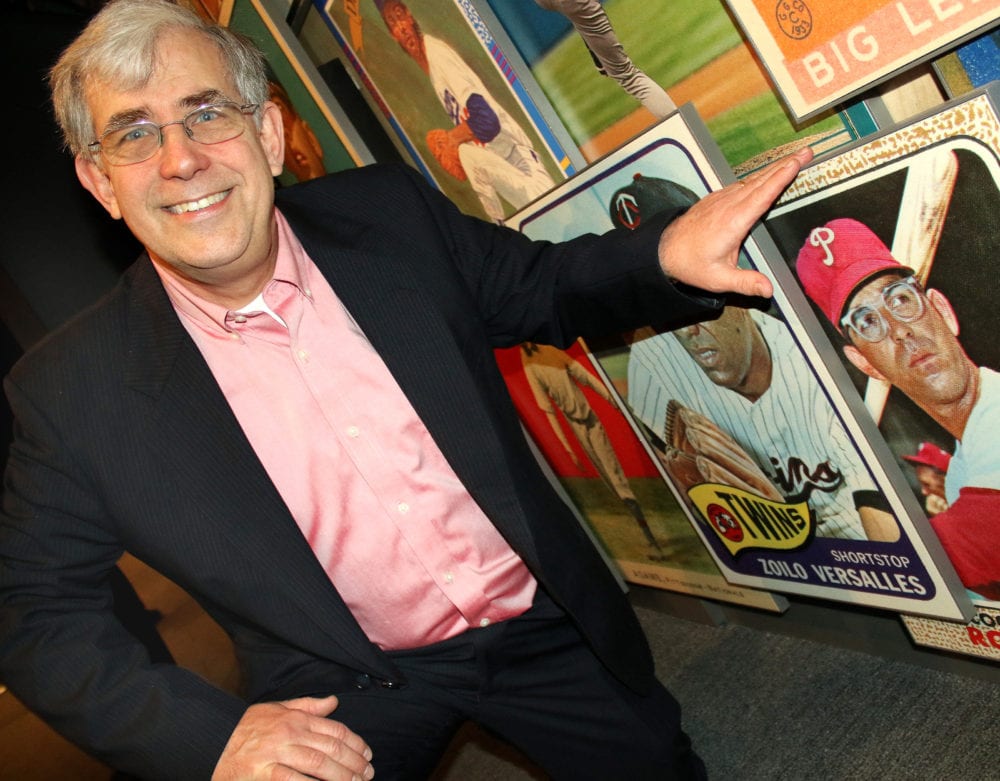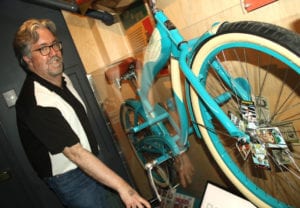NEW AT THE HALL OF FAME
‘Shoebox Treasures’
Tells You Everything
About Baseball Cards

By LIBBY CUDMORE • Special to SUMMER DREAMS
COOPERSTOWN – In looking through the Baseball Hall of Fame’s 200,000 baseball cards, curator John Odell happened upon his childhood favorite.
“I had a 1968 card for Cookie Rojas, who played second base for the Phillies,” he said. “He wore glasses and his name was ‘Cookie’ – I thought that was the funniest thing in the world. All the Mickey Mantles and Frank Robinsons we have don’t impress me as much as that one card.”

Rojas’ card – alongside 2,500 others – are now part of the newly unveiled “Shoebox Treasures” baseball card exhibit, which opened Saturday, May 25 as part of the Hall of Fame Classic Weekend.
“We had an exhibit for a long time, but about 10 years ago, it was taken down for renovations,” he said. “Over the years, people have been writing to us telling us they miss it, so this is in response to our visitors.”
The earliest card in their collection dates back to 1872, a trade card for Mutual of New York. “These 3×5 trade cards were usually to promote a local store,” he said.
Such cards also set up a debate among collectors. “Every collector defines a baseball card,” he said. “We have a Kellogg’s box from the 1970s with Yogi Berra on it, you cut it out and it had a little stand. We define that as a card, but others may see it as a cereal box premium. We cast a wide net on what we consider a baseball card.”
In the early 1900s, cards were packaged with tobacco products to promote the brand, including the famous Honus Wagner card, which ceased production after the shortstop, a non-smoker, refused to let tobacco companies use his image. “That one is in our ‘Holy Grail’ section,” he said. “Each card is in a separate box, and you push a button to put the light on it for just a few seconds.”
In addition to baseball players, tobacco cards also featured actors and other athletes. “Baseball players were a very small fraction of those sets,” he said.
“Companies didn’t need to give away things to promote their brand,” said Odell. “Cracker Jack and candy companies got more into the cards.”
Kids collected cards up through the ’70s, but the 1975 sale of a $1,000 Mickey Mantle rookie card – now also on display as a “Holy Grail” – ushered in the “junk wax” era of card collecting through the ’80s.
“People thought each of their cards would be worth $1,000,” he said. “But that’s not the case. When everybody collects them, they’re worth nothing.”
The baseball strike in 1994 put an end to the casual collector, and although you could once buy cards at CVS, Bresee’s and the Cooperstown General Store, modern cards are now only sold at specialty shops.
“Today’s cards are gorgeous,” said Odell. “They come in a wide variety of color and card stock, they have embossing.”
There is also the rise of digital card collecting. “You can have a thousand cards on an app on your phone,” he said. “But it’s not the same thing.”
But the Hall didn’t forget the other fun parts of baseball card collecting. “We have a bicycle wheel with cards attached with clothespins,” he said. “You can crank it and make that motorcycle noise you used to make with your common cards – or duplicates of guys from the team you hate.”
They even have some of the classic baseball-card bubble gum on display. “We’ve catalogued some of it, but we did not sample any,” he said.
“Shoebox Dreams” is located on the third floor of the Hall of Fame, past the World Series exhibit.
“It’s not just a display,” he said. “We want to talk about the cultural connection fans have to the cards themselves.”

